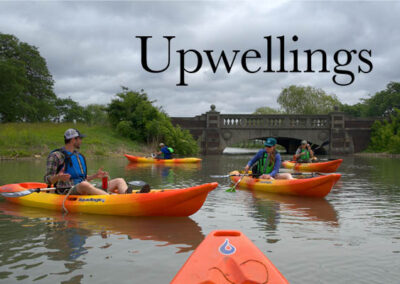 Michigan is home to more than 80 public marinas and harbors, managed by state, county, or local governments. They are part of a boating culture that contributes nearly $2.5 billion in economic activity to the state each year. Unfortunately, sporadic funding, fluctuating water levels, aging infrastructure, and shifts in the state’s economy can leave waterfront communities struggling to make ends meet. To help these waterfront communities, Michigan Sea Grant (MISG) and the Office of the Great Lakes in the Michigan Department of the Environment, Great Lakes, and Energy worked with partners to update the Sustainable Small Harbors Tools and Tactics Guidebook. This Guidebook helps marinas achieve three aspects of sustainability – social, environmental, and economic.
Michigan is home to more than 80 public marinas and harbors, managed by state, county, or local governments. They are part of a boating culture that contributes nearly $2.5 billion in economic activity to the state each year. Unfortunately, sporadic funding, fluctuating water levels, aging infrastructure, and shifts in the state’s economy can leave waterfront communities struggling to make ends meet. To help these waterfront communities, Michigan Sea Grant (MISG) and the Office of the Great Lakes in the Michigan Department of the Environment, Great Lakes, and Energy worked with partners to update the Sustainable Small Harbors Tools and Tactics Guidebook. This Guidebook helps marinas achieve three aspects of sustainability – social, environmental, and economic.
A key component of social sustainability is developing a common vision for the future of the waterfront through master planning. One crucial component of master planning is to make sure all voices are heard during the process shaping the community’s shared vision; the Guidebook includes information on considering diversity, equity, and inclusion in placemaking efforts.
To achieve environmental sustainability, marinas need to work with nature to provide more resilient infrastructure rather than using hard or “gray” infrastructure. This resilient approach includes engineering using natural systems to reduce the effects of flooding from rain events or shoreline erosion from high water levels. The Guidebook also provides communities with options to improve resiliency when dealing with unprecedented climatic extremes. MISG also supports the Michigan Clean Marina Program, which certifies marinas that become more environmentally sustainable.
Most important to community leaders is economic sustainability, in which revenue exceeds expenses and includes provisions for operating and maintaining the harbor and infrastructure. Visitors contribute actual value to the community through dollars spent during boating trips by eating in restaurants, sleeping in lodgings, and shopping in stores. Residents contribute value through similar means but also through ownership of houses, cars, and boats. The local businesses and the harbor provide revenue to the municipality through taxes, fees, and direct sales of goods.
The web-based Guidebook features tools and tactics and community case studies to assist community leaders and planners with development of a shared vision and a harbor sustainability strategy for their community’s waterfront, including the harbor. Waterfronts and harbors provide value to residents and visitors through improved quality of life.


